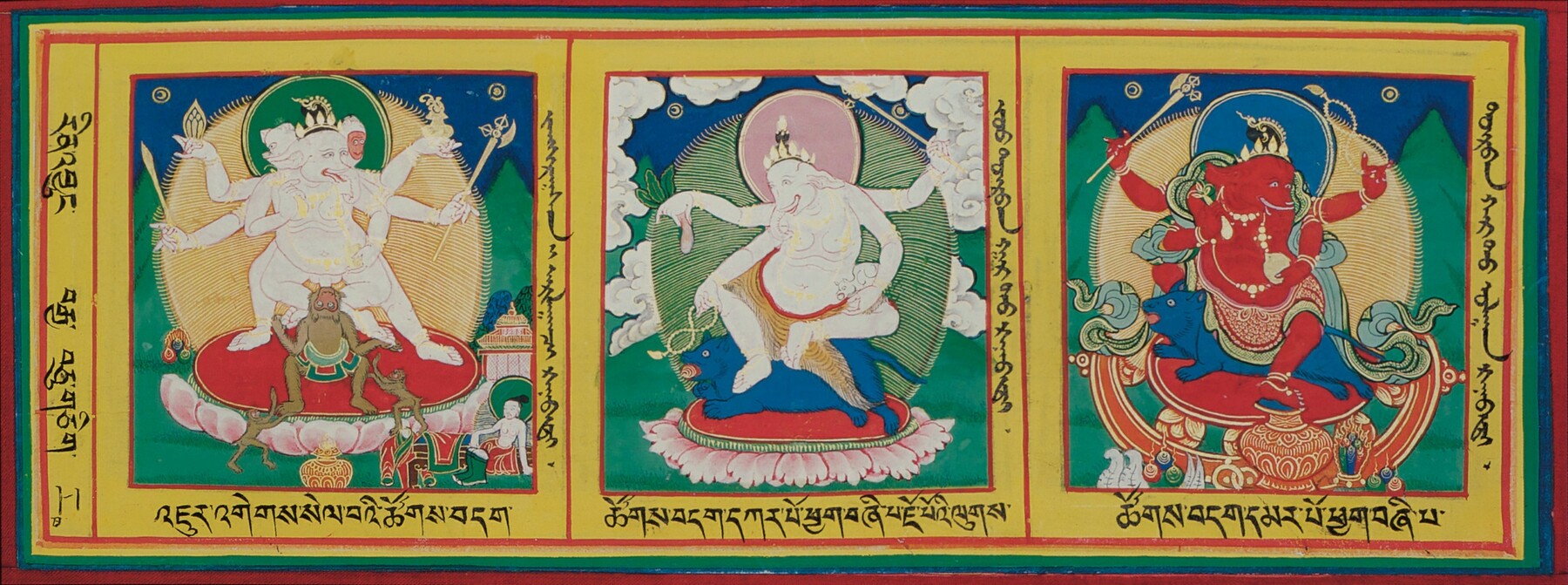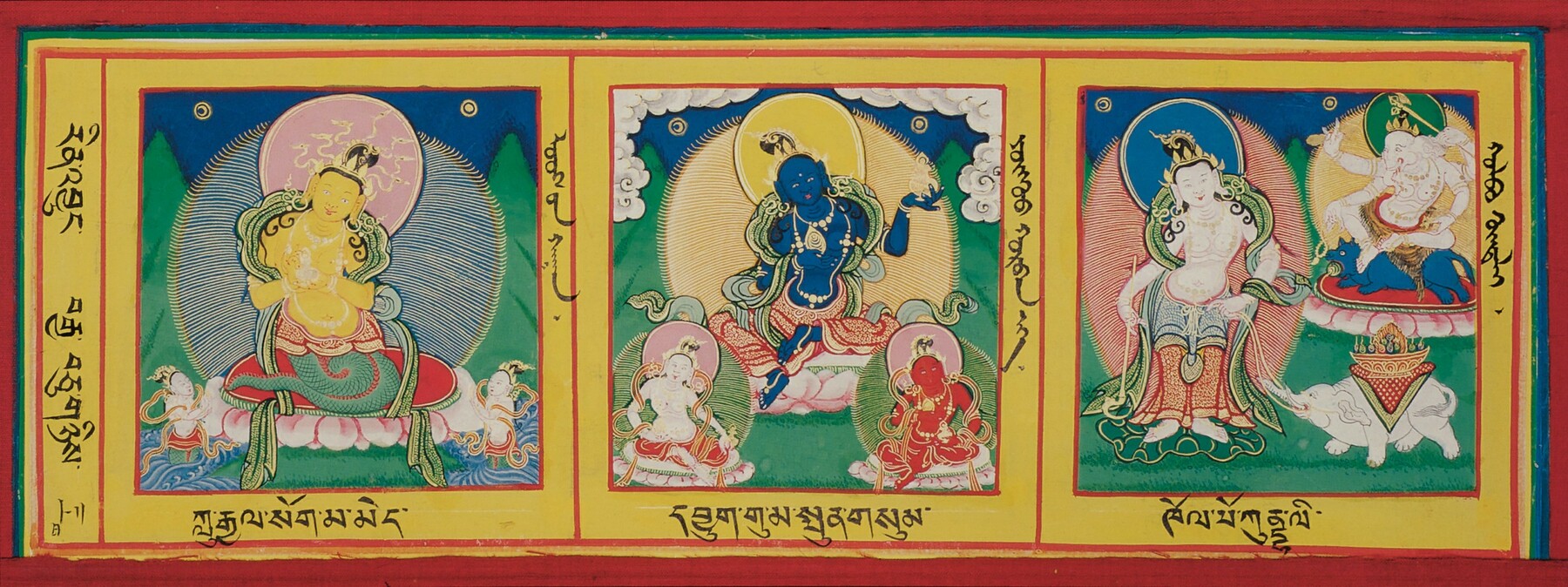Nevertheless, the probability that that Vajramrita is female when acting as shakti is probably higher than the probability of a male shakti.Sun--Surya as described in Sarvadurgati Parishodana is certainly some kind of secret sun which appears to have an encoded Ganesh as the male seed, and, Vajramrita as shakti. In Karmamudra, Vajrasurya has much to do with the male member, and, in Vilasini Tantra, it uses a Jewel Family Dharmadhatu Ishvari.
However, Vajramrita does not come up as a yogini in Dakarnava or anywhere.
But obviously not here. It is possible the description of the shakti as Vajramrita is similar to what Davidson said about Vajravala and Manjusri. He said that calling Manjushri Vajravala was probably not an equivalence to a god by that name, but rather using the words as a description.Chapter 7 starts with a praise of Vajrāmṛta sung by Māmakī, who is still involved in the love play with him, while joining her hollowed palms in reverence. This song contains a description of Vajrāmṛta, who is defined as a hero encircled by other heroes, who is joined by the group of Mudrās; he emits a sound similar to that of kokilas and bees, he is goodlooking, and he experiences the pleasure of love; he is omniscient and friendly towards all beings; his body hair is bristled; and he makes love to the 24 Great Wisdoms (Tārā, Vitārā, etc.) in all three spheres of existence.
The praise ends with two Apabhraṃśa stanzas, which read: “You, dark like a petal of a blue waterlily, are the Tathāgata, the Vajra-holder. Oh Pleasure of Sexual Delight, love me! By means of that you accomplish [your] duty in the three worlds. You are empty, pure, the supreme stage, the unchanging Vajra, beginningless. The living being—either moving or unmoving—who meditates on you, how can he be born again in the saṃsāra?”.
I do have such an affinity, but more for the eagle. What I was able to find is that when groups who revered eagles were brought into the Indic world, their symbolic eagles became garudas.Garuda has some, and, he may have been related to various birds historically; but in astrology, he is Aquila the Eagle. Firstly, Aquarius the Water (Nectar) Bearer is usually a veil for this sign as it is reckoned among the Four Living Creatures which I take as the symbol of the Fixed Cross. And then I would put our Garuda against whatever the disciples of "Aquila" have come up with and I think he would be more reliable. I do not personally have the affinity to it but I am confident in its ability.
- Home
- Forum
- Chat
- Donate
- What's New?
-
Site Links

-
Avalon Library

-
External Sites

- Solari Report | Catherine Austin Fitts
- The Wall Will Fall | Vanessa Beeley
- Unsafe Space | Keri Smith
- Giza Death Star | Joseph P. Farrell
- The Last American Vagabond
- Caitlin Johnstone
- John Pilger
- Voltaire Network
- Suspicious Observers
- Peak Prosperity | Chris Martenson
- Dark Journalist
- The Black Vault
- Global Research | Michael Chossudovsky
- Corbett Report
- Infowars
- Natural News
- Ice Age Farmer
- Dr. Joseph Mercola
- Childrens Health Defense
- Geoengineering Watch | Dane Wigington
- Truthstream Media
- Unlimited Hangout | Whitney Webb
- Wikileaks index
- Vaccine Impact
- Eva Bartlett (In Gaza blog)
- Scott Ritter
- Redacted (Natalie & Clayton Morris)
- Judging Freedom (Andrew Napolitano)
- Alexander Mercouris
- The Duran
- Simplicius The Thinker





 Reply With Quote
Reply With Quote




Bookmarks